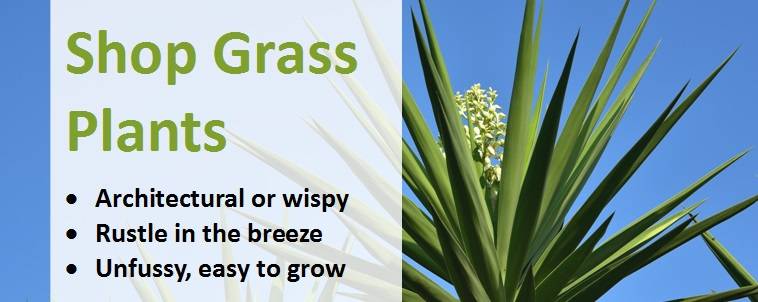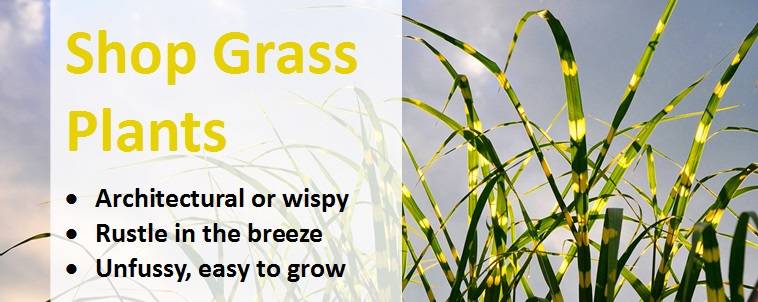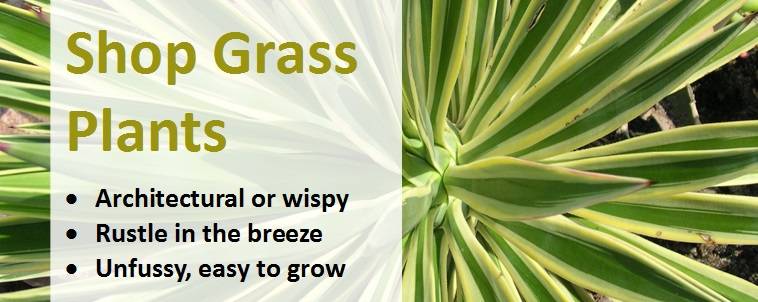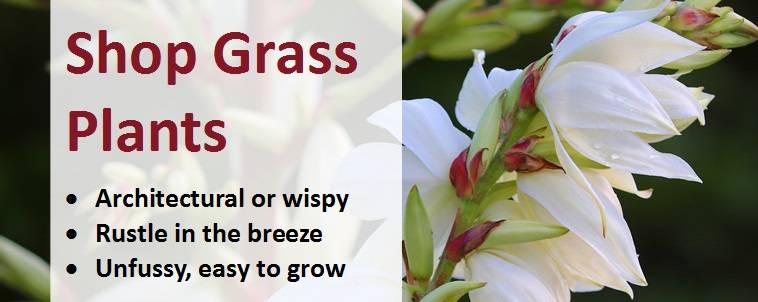Guide to Ornamental Grasses
Ornamental grasses are highly versatile, unfussy, easy to grow and pest and disease free, ranging from miniatures such as Stipa Pony Tails and Carex Evergold for the rockery to grand, architectural Cordylines, stately Yucca plants and towering giant bamboos. Grasses come in an array of forms, colours and textures. Stipas are great for adding subtle movement and a graceful presence to your garden, working particularly well when interspersed with dainty perennials and shrubs, or as a contrasting backdrop to the more explosive colours of large, bright and pastel flowers of Echinacea, Crocosmia and Rudbeckia.
Wispy grasses add a certain unimposing calm to sensory or prairie gardens, producing a rustling melody and working well grown en masse in large swathes. Grasses are also perfect for linking disparate groups of plants whose flower colour, if they were positioned side by side, would make for an unwelcome combination whilst smaller varieties can be used as the centrepiece in small container plantings, surrounded by bedding plants or bulbs. Taller upright grasses and bamboo add linear precision and a certain formality, which works well alongside Hostas, Fatsia Japonica and varieties of Mahonia.
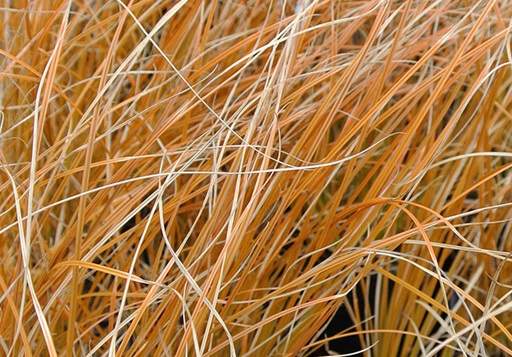
Garden Care
Grasses are adaptable to a range of conditions, but generally prefer a sunny spot in a well-drained, moderately fertile soil. For very vigorous varieties, especially running bamboos, it's best to constrain the root system to prevent them spreading beyond their designated space. Many grasses also work well in containers using a mix of four-fifths John Innes No 2 compost to one-fifth multi-purpose compost to lighten the mix. Grasses don't normally require summer feeding, although it is best to mulch and top-dress with a handful of general fertiliser in early spring to promote fresh new growth.

Lifting and Dividing
It's important you lift and divide your grasses at the right time of year. Lift and divide grasses in early to mid-spring, just as new shoots are starting to emerge. Use a sharp spade to carefully chop clumps into smaller pieces, ensuring that each piece is not too small and has sufficient roots to successfully re-establish - splitting into 3-4 pieces is normally recommended. Once split, replant each divided clump with sufficient space in the garden or a container.
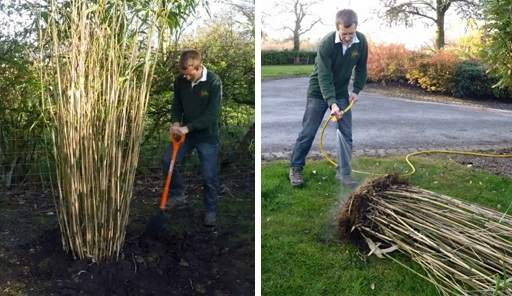
Pruning
Grasses are best pruned in early to mid spring. The required approach depends on whether you are growing a deciduous or evergreen grass. Deciduous, or herbaceous, grasses can be sheared back hard to just a few centimetres (2 inches) above ground level, leaving a hairy turf from which the new growth will form without getting tangled with old stems. Don't worry too much if you cut through some new shoots in the process - it's a grass, so just like a lawn it will grow back again. Finish by removing any dead leaves and debris from around the plant.
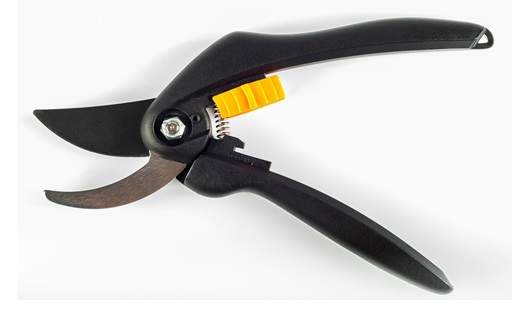
Evergreens on the other hand do not respond well to hard pruning, so only dead, damaged, weary and thatch-like foliage should be pulled away or cut cleanly using secateurs. Be careful not to cut into any new stems coming up through the crown and clear any debris from in and around your grass plants. If any flowered stalks have been left uncut over the winter, remove them before new growth starts to emerge. You should be left with a lovely green tussock ready for the new year.
Winter Protection
Allow your grasses to die back naturally in the winter. Frost-sensitive grasses are best overlaid with dry leaves secured by brushwood or horticultural fleece. Use string or gardening twine to tie the leaves of larger grasses such as yucca plants and Cortaderia around the base of the clump. Move container grown plants to a frost-free location, such as a greenhouse or conservatory, during periods of cold and wet weather.
Grasses by Variety
Details of some of the most popular grass varieties are given below:
Carex is a vast genus of over 2,000 species, commonly known as sedge. It is adaptable to all soil types from shallow water to pure sand and most also respond well to shade. Carex Evergold has elegant, arching, fine-textured variegated gold and dark green leaves that work well in a formal border. Carex Testacea has an arching habit with narrow bronze leaves and light brown summer flower spikes, whilst Carex Pendula has a graceful, drooping habit with narrow green leaves and pendulous green flower spikes. For more information visit our Carex plants information page.
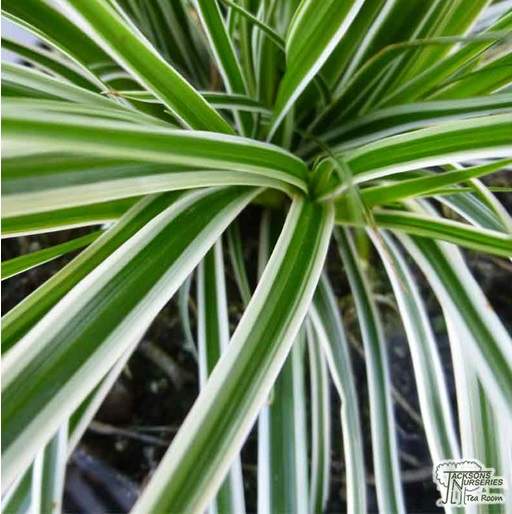
Cordyline (Cabbage Palm / Torbay Palm)
Technically evergreen shrubs rather than grasses, Cordylines are popular for coastal gardens and city gardens, maturing to form awkwardly shaped stubby trees with tufts of spiky leaves that resemble huge pineapple tops. These form because the plants gradually lose their older leaves and form fresh ones directly above, creating a trunk that slowly gets larger each year. Cordyline Australis is a popular, plain green variety; Cordyline Cha Cha offers gold and green variegation with reddy-pink veining on mature leaves; and Cordyline Salsa has more sword-shaped leaves with a distinctive solid pink stripe down the middle and along the base of each leaf. For more information visit our Cordyline plants information page.
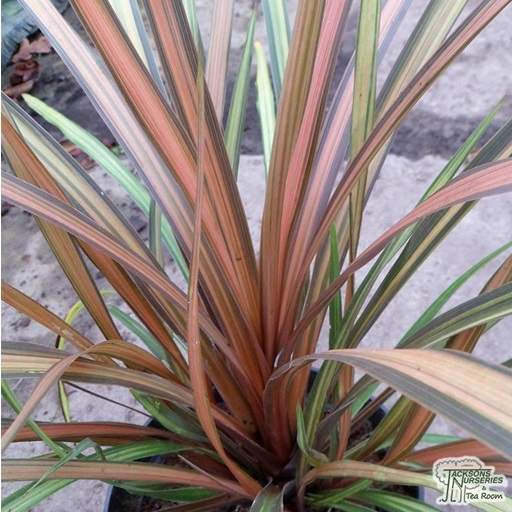
Pampas Grass is a robust, vigorous evergreen grass which produces large decorative white or pink flower plumes on long erect stems in summer. These are borne above large compact tufts of narrow, linear green leaves with sharp edges. When planting, choose a location with plenty of room for vertical growth, bearing in mind that Cortaderia plants can reach over 3 metres (10 feet) tall, and consider constraining the root system to prevent it from spreading beyond its designated bounds, particularly in small to medium sized gardens. Protect from winter frosts by tying leaves together with string and covering the roots with straw or mulch. For more information visit our Cortaderia plants information page.
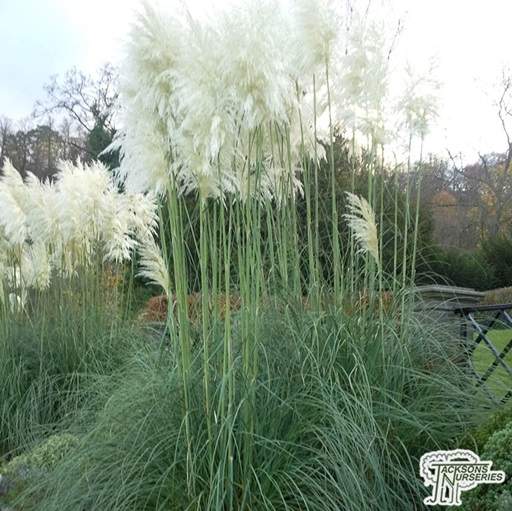
Festuca Glauca
Festuca grasses are compact, container-friendly plants which form a small turf of bright azure blue typically around 30cm tall. It has needle-like, stiff foliage and produces short spikes of blue-green flowers in summer, fading to light brown in late autumn. It looks particularly attractive when grown in terracotta pots or when combined with purple-flowering perennials. The small size of Blue Fescue grass makes it perfect for the rockery garden, where it will become drought tolerant once established. For more information visit our Festuca Glauca Elijan Blue plants page.
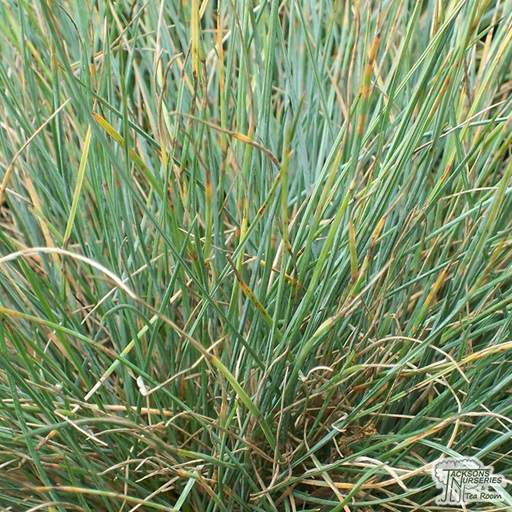
Imperata Red Baron (Blood Grass)
An erect, vigorous ornamental grass with showy, fresh green leaves which become intensely blood-red coloured from the middle to the tips in summer and retaining their striking colour through autumn. Its exceptional colour makes it perfect for incorporating into borders, rock gardens or containers, particularly alongside golden, blue or black-foliaged grasses which it will contrast with beautifully. Blood Grass has a slow-spreading, clump forming habit and produces clusters of fluffy, silvery-white flowers between June and August. For more information visit our Imperata Red Baron plants page.
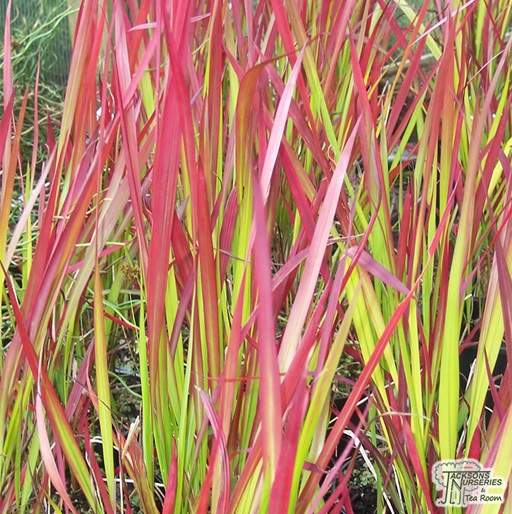
Native to marshes, slopes, mountainsides and other open habitats, mainly in eastern Asia but extending well into Africa, Miscanthus are tightly clumping perennial grasses with long, narrow and sometimes sharp foliage. Prized as a symbol of autumn in Japanese art, it is highly versatile. Larger varieties such as Miscanthus Kleine Fontane and Miscanthus Malepartus are mainly used for adding ascent and architectural flair, either alone or in groupings, but also work well as a wind breaks, pond edging or privacy screens, growing to over 3 metres tall. Smaller varieties are more decorative, such as the popular Zebra Grass with unusual creamy-yellow horizontal bands and the slender, gold and green variegated Miscanthus Morning Light. For more information visit our Miscanthus plants page.
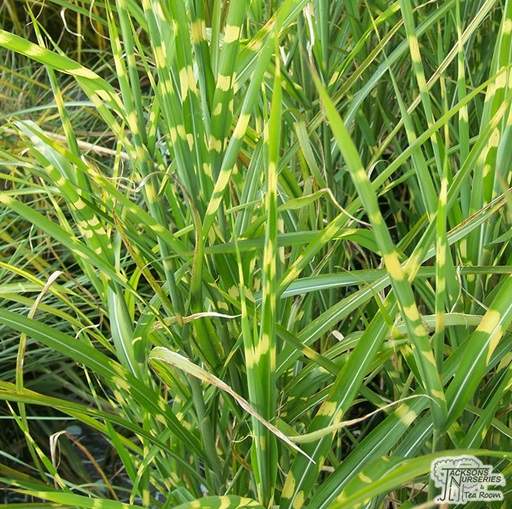
Native to North America, Switch Grass is a versatile, unfussy variety with a clump-forming, columnar habit and narrow, stiff mid-green leaves which turn orange-yellow in the autumn. It produces airy clouds of finely-textured, pink-tinged flowers in branched seed-heads in mid-summer, extending up to 80cm (nearly 3 feet) into the air. These panicles turn beige as the seeds mature in the autumn and persist well into winter. Panicum grows best in full sun, where it will typically retain its vertical shape throughout the growing season. It is ideal for building into the perennial border, using as a low screen or incorporating into the wild or prairie garden. Switch grass is also tolerant of wet conditions, making it suitable for water and bog gardens. The 3 best varieties are Panicum Heavy Metal, Panicum Squaw and Panicum Rehbraun. For more information visit our Panicum plants information page.
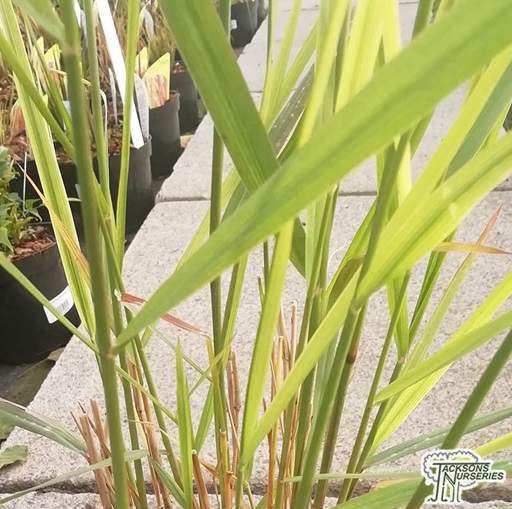
Commonly known as flax plants, Phormiums are robust, colourful, stately grasses which are also hardy providing they are mulched well in the winter and not grown in frost pockets. Flax forms a large clump of glossy, leathery, sword-shaped, arching leaves which are often variegated with coloured edges and central ribs. It produces tall panicles of tube-like flowers held high above the foliage on flower spikes from July to August. These produce large amounts of nectar, making them highly attractive to feeding birds and insects. The architectural shape of flax means it works well in formal planting schemes or grown in patio containers with gravel sprinkled over the soil surface (container growing also assists with flower production).
They also stand up well to windswept, coastal gardens and make a good contrast item in the herbaceous border. Large clumps may be lifted and divided every year years in spring, with each segment re-potted or planted out separately in the garden to produce new plants. Protect your Phormium from frost until established and use a sharp knife to cut back older and scorched leaves to base level in late winter / early summer, leaving space for the newer shoots to develop. For more information visit our Phormium plants information page.
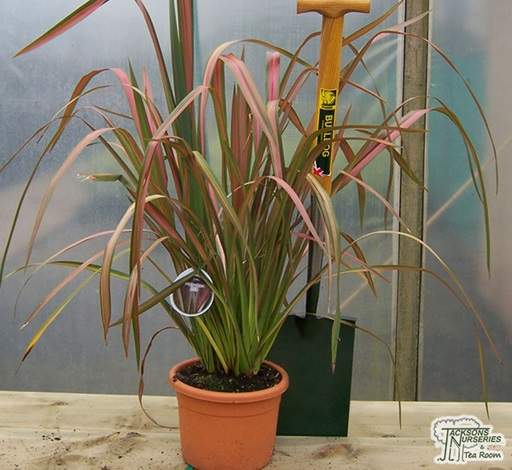
Yuccas are trendy, tropical architectural plants which are a member of the Agavae group and native to Mexico and Central America. Growing best in full sun, they are hardy and generally pest and disease free. They have thick, rigid woody stems and tough, spiky sword-shaped evergreen leaves with razor-sharp edges. The leaf edges are so sharp on mature plants that we discourage the use of yuccas if you have children or small pets, as they may cause unwanted harm to people and animals. Yuccas are the state flower of Mexico, producing dramatic clusters of droopy, creamy-white, bell shaped flowers with a subtle fragrance from late spring through summer.
The plant has a mutual relationship with the yucca moth, which acts as a pollinator and lays eggs in the yucca (without causing any damage to the foliage or flowers). Adam's Needle Palms are excellent for adding tropical appearance or dramatic ascent to your garden in a neutral to slightly acidic soil. Yuccas like to be reasonably dry (so much so that they are sometimes referred to as the 'no water plant') so do not over-water. If your plants start developing brown-tipped foliage, this is a sure sign of over-watering. It is therefore important to avoid planting in wet ground that 'puddles' - waterlogged roots are the most common cause of yuccas downfall, especially during the summer dormant phase. For more information visit our yucca plants information page.
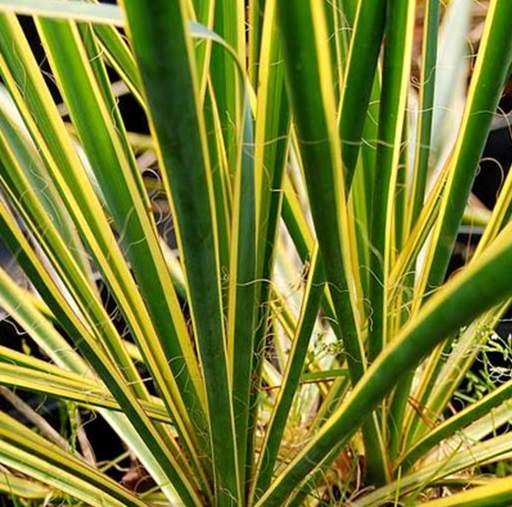
For bamboos such as Fargesia and Phyllostachys please visit our page on how to grow bamboos.
-
Plant Guides
- Guide to Bamboo Plants
- Guide to Climbing Plants
- Guide to Climbing Roses
- Guide to Conifers
- Guide to Floribunda Roses
- Guide to Fruit Bushes
- Guide to Fruit Trees
- Guide to Garden Ferns
- Guide to Garden Shrubs
- Guide to Heather Plants
- Guide to Hedging Plants
- Guide to Herb Plants
- Guide to Herbaceous Perennials
- Guide to Hybrid Tea Roses
- Guide to Japanese Maple Trees
- Guide to Ornamental Grasses
- Guide to Rhododendrons
- Guide to Topiary
Share this page:

